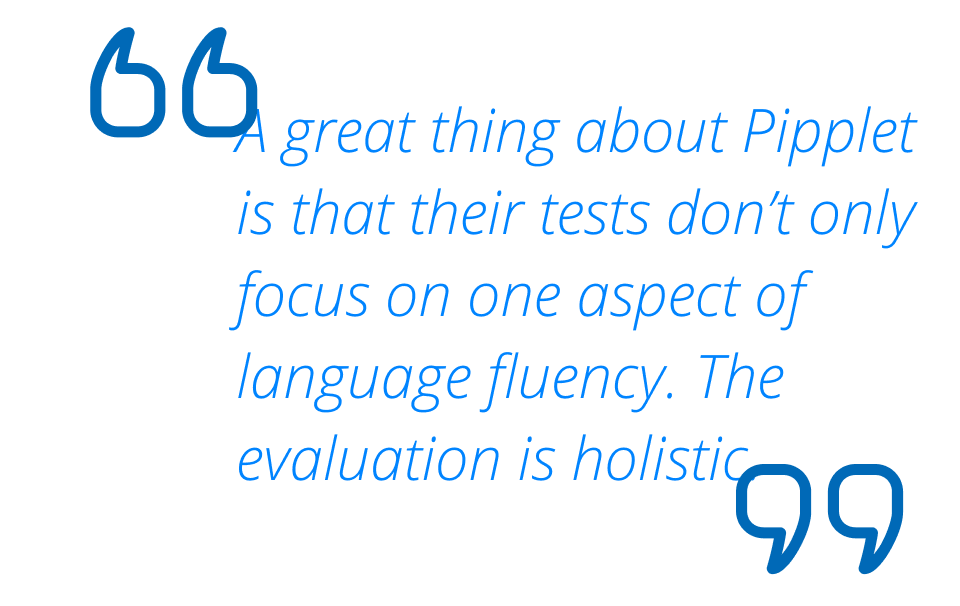Quick Tipplet 1: Being able to review and evaluate a language exam has to be done from an objective point of view. Also, with the understanding that the language is likely not the first language of the test taker. By focusing on the important elements of clarity in pronunciation but also the basic quality of being understood by a native speaker is an effective technique.
What do you think makes the Pipplet test special?
A great thing about Pipplet is that their tests don’t only focus on one aspect of language fluency - the evaluation is holistic. And, while it is important that the tests are comprehensive, it is also essential to make sure you don't have a test design too comprehensive that it becomes discouraging to the candidate, prohibiting them from being able to speak, interact, and showcase their language speaking competencies. I find that these small but important design elements in the Pipplet tests are what sets it apart from others.
Can you walk us through the first thing you do when you receive a new Pipplet test to grade?
I’ll speak about my approach. First, I empathize. One of the most important experiences I have gained throughout my years of teaching is this, especially when the goal is to be proficient In a language proficiency. Having empathy has a very important impact on the success and confidence of a learner, and it also allows me to identify potential.
While I was teaching, I realized the effects of empathy can provide remarkable improvements in students' comprehension skills and vocabulary. For this reason, I still carry this ideology when evaluating Pipplet tests. I think that feeling the excitement of the candidate who learns a new language, wants to improve the language they learned, or showcase their proficiency enables me to evaluate the test more objectively.
Quick Tipplet 2: Having the necessary resources and skills in-house to lead our community of examiners helps demand greater expectations, quality, and overall accuracy in our results reports.











